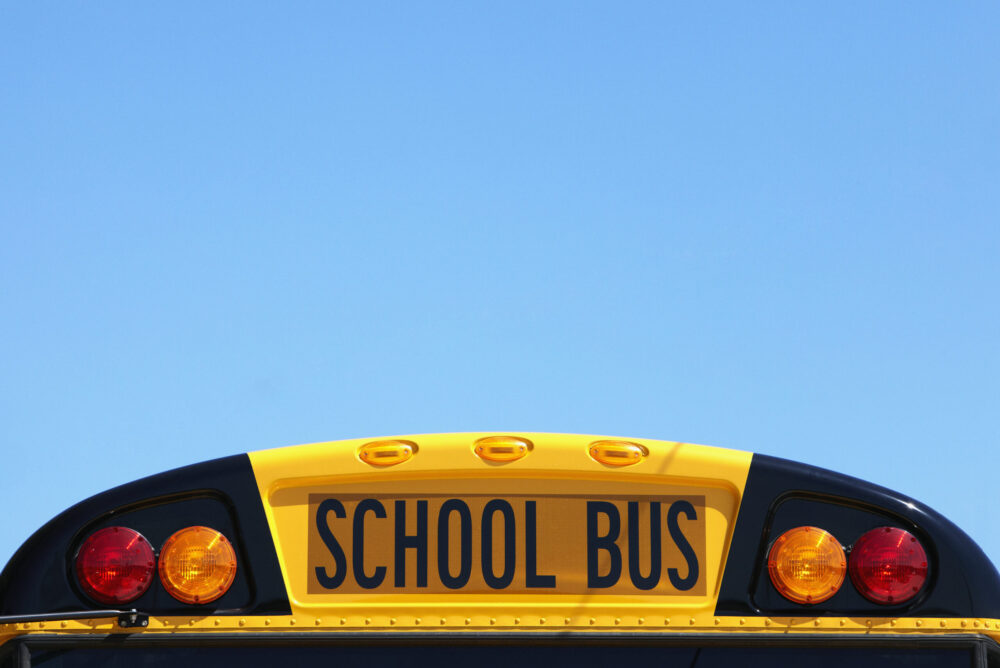
Clean School Bus Rebates Program Offers Clues for Port Electrification
By Ian Gansler
The Inflation Reduction Act (IRA), passed by Congress in August 2022, includes $3 billion to create a new grant and rebate program for port electrification and emissions reduction, to be administered by the Environmental Protection Agency (EPA). While it will take some time for EPA to set up this program and issue a call for applications, ports can and should start preparing now if they want to be competitive for these funds. To that end, the port industry should look to the Clean School Bus Rebates Program for information about how the port electrification program could be structured.
The Clean School Bus Rebates Program was created by the Bipartisan Infrastructure Law (BIL), passed by Congress in November 2021, with $5 billion in funding. The program is designed to replace aging diesel-powered school buses with electric or low-emission models. There are similarities between the school bus and port electrification program, which could lead to the latter being set up similarly. First, both programs allow the EPA to issue rebates, which allow the applicant to purchase equipment itself and receive reimbursement, as opposed to the lengthier process of grant obligation. Second, both programs will fund the replacement of diesel-powered heavy-duty vehicles (although the port electrification program will also fund other types of projects). And third, applicants of both programs will be units of local government that can purchase equipment in partnership with a private company.
The school bus program’s use of rebates, and the IRA’s allowance of rebates for the port electrification program, could result in welcome efficiencies for applicants. The school bus program’s guidelines note that rebate selectees will be notified only two months after the application deadline, and selectees will be able to purchase buses and charging infrastructure immediately after selection. This contrasts with federal grant programs, in which awardees often wait over a year while they navigate the grant obligation process.
The school bus program offers a set rebate amount depending on the class and fuel type of the bus purchased, and corresponding funds for charging infrastructure are similarly set based on vehicle type. While the market for port cargo-handling equipment is more complicated than school buses, the rebate structure could offer a useful clue: that EPA could define set rebate amounts for different types of cargo-handling equipment. Additionally, with each type of school bus comes a proportional sum for charging infrastructure. This could pose a complication for ports, which will likely require extensive electric grid upgrades to accommodate increased power demand. In an expected similarity, the school bus program does not allow funds to be spend on the utility side of the electrical meter.
The port electrification program has a set-aside for ports in non-attainment areas, regions with higher levels of air pollution. The school bus program specifies that schools in areas of high poverty, U.S. territories, tribal communities, and rural communities will receive higher rebates. While there is no indication that the port electrification program will follow a similar prioritization scheme for applicants, it is likely that ports that can use rebate or grant funds to address poverty and pollution in near-port communities will be more competitive in their applications.
In a key difference, ports will likely apply to the electrification program for more than just electric vehicles. Ports will need funding for electric grid upgrades, shore power systems, microgrid technology, and more. These projects will likely fit better in the federal grant category than rebates. It remains to be seen how exactly EPA will apportion funds between different types of projects and between grants and rebates. No matter the result, AAPA will continue to work with EPA and Congress to ensure the port electrification program is set up as efficiently as possible. Ports with ideas or concerns about the program should reach out to Ian Gansler, Manager of the AAPA POWERS Program.
You can read AAPA’s summary of Inflation Reduction Act funding here and the guidelines for the Clean School Bus Program here.
